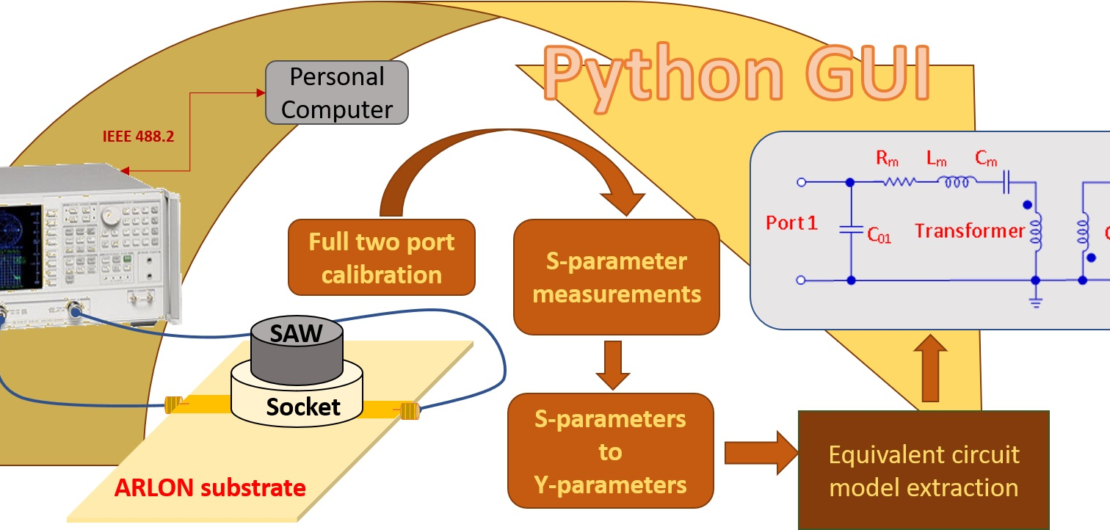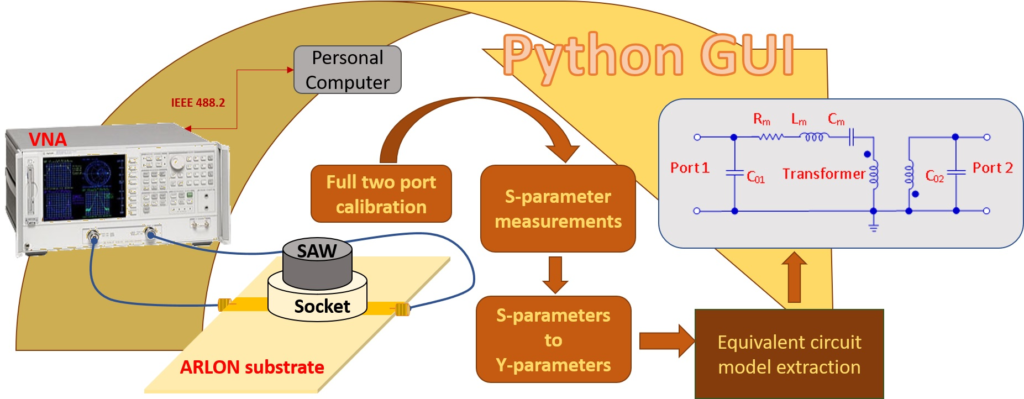 News
News
An equivalent-circuit model for saw resonators: from room down…
The concept of the surface acoustic wave (SAW) technology was first explored in 1885 by Lord Rayleigh, who studied the propagation of acoustic waves in piezoelectric materials. SAW devices today represent a hot research topic because of their widespread use in several fields. They are compact, easy to fabricate, and cost-effective. They represent a key technology in many fields, such as automotives, electronics, medical, aerospace, and defense. Moreover, SAW resonators are widely used in sensing applications because of their unique features that enable them to be used as detectors in battery-less systems with remote wireless interrogation.
The operating principle of a SAW resonator is relatively simple. An acoustic wave travels through the surface of a piezoelectric material. Any stimulus or perturbation on the device substrate (e.g., a temperature change) may affect the propagation of the acoustic wave, thus altering the characteristic resonant frequency.
The activity carried out at University of Messina by a research group head by Prof. Nicola Donato (Res4Net member), in collaboration with the University of Niš (Serbia), is focused on the electrical characterization of a commercial SAW resonator over the temperature range between 20 K and 373 K. An equivalent-circuit model is extracted and validated in the entire range of the investigated temperature and the major scientific results have been published in IEEE Sensors Journal and MDPI Micromachines Journal in March 2021 and in MDPI Sensors Journal in April 2022.
The developed study, based on coupling an extensive temperature-dependent experimental characterization with equivalent-circuit modeling, enable one to analyze in detail the SAW performance over the selected temperature range and to verify the accuracy and robustness of the modeling procedure, from low- to high-temperature conditions. In the latest contribution, the extraction procedure has been improved for a more accurate determination of the model parameters (i.e., the values of the equivalent-circuit elements). This improvement has been accomplished by using a complex Lorentzian function to fit both real and imaginary parts of the short-circuit input and output admittances (i.e., Y11 and Y22) of the SAW under test, thereby allowing an improvement in the determination of the resonant parameters, which are used for the extraction of the equivalent-circuit elements. The extraction software has been developed in Python and is described here.
The developed modeling procedure will be useful for the in-depth characterization and modeling of SAW gas sensors.
